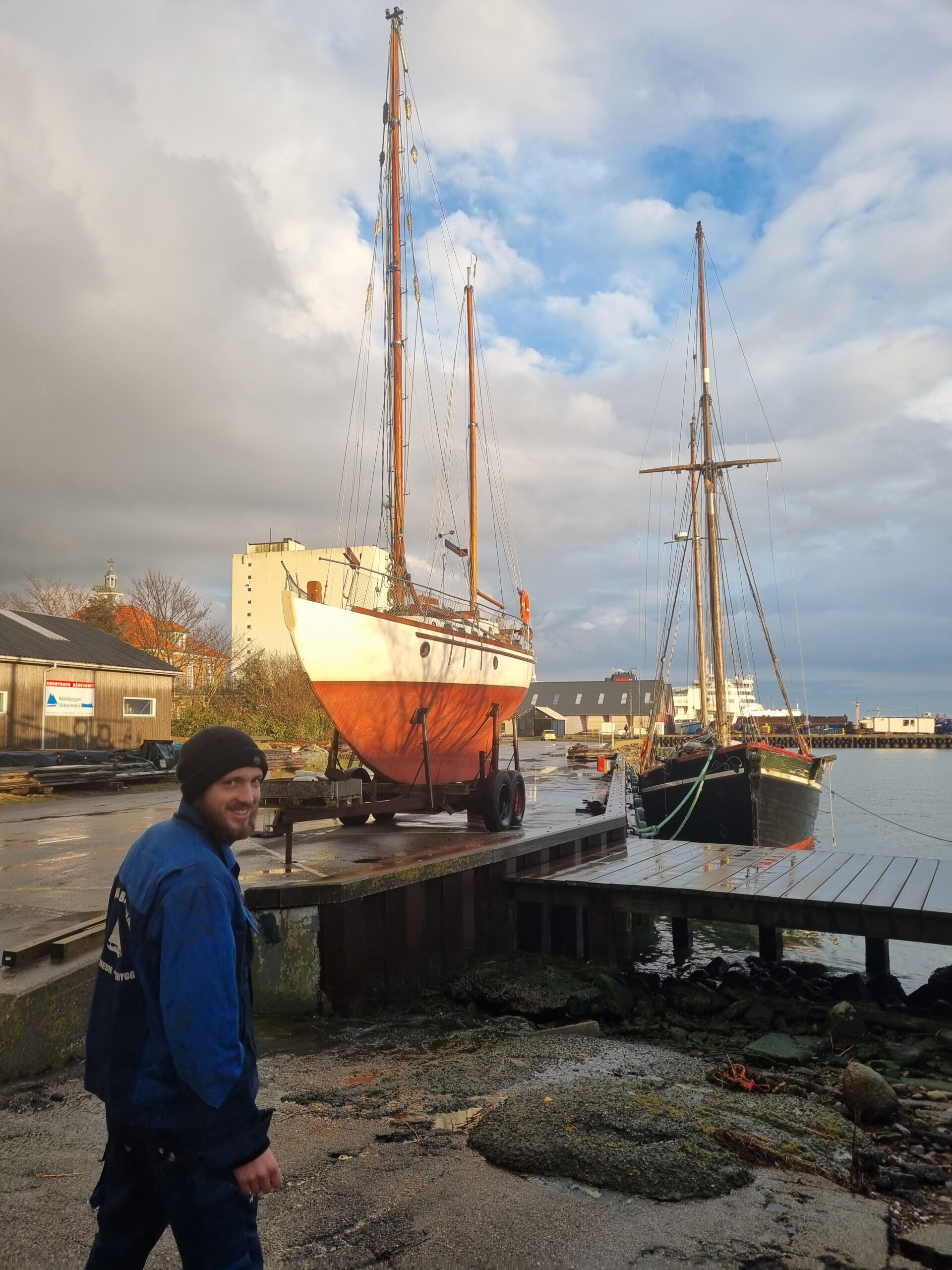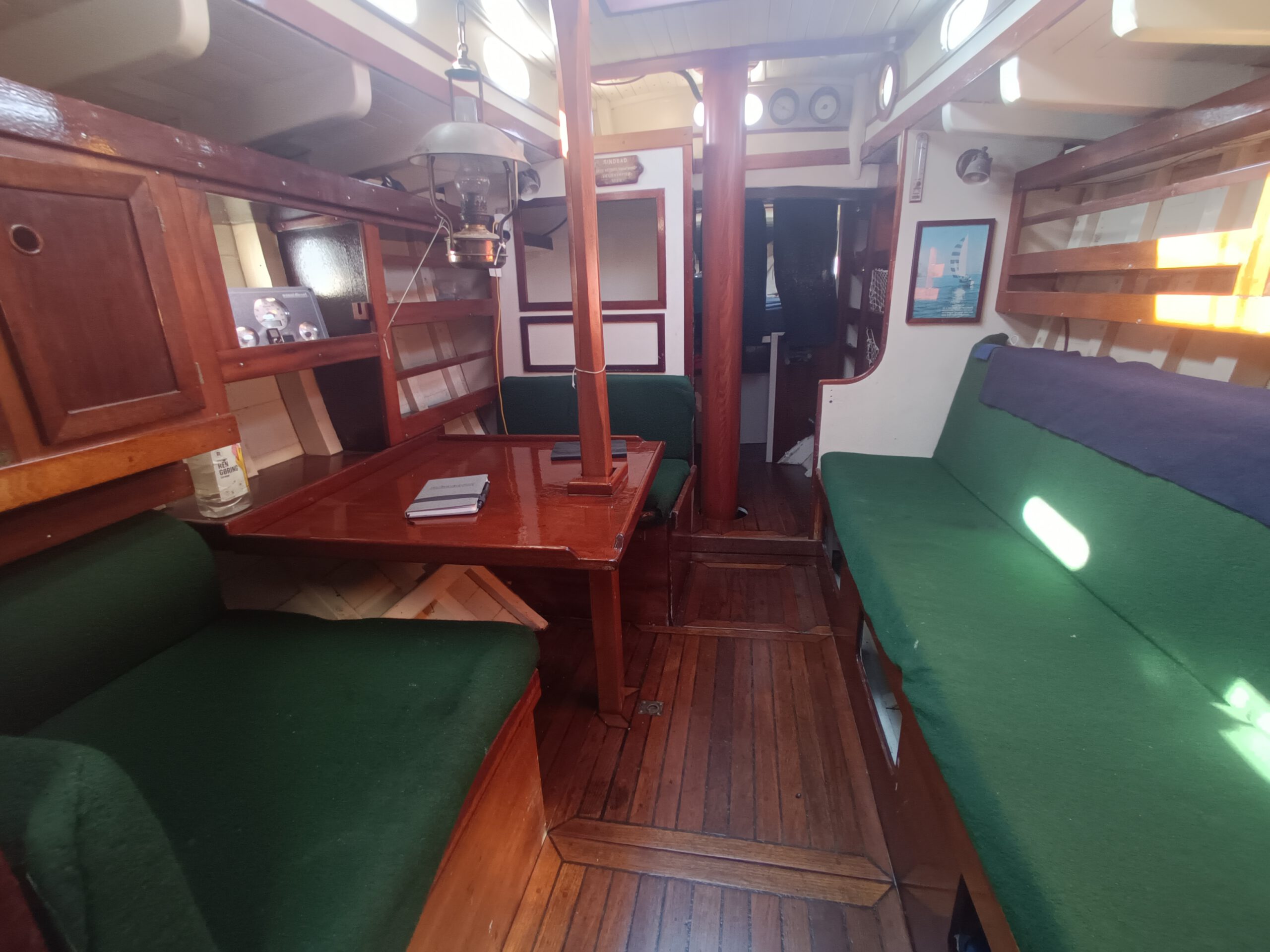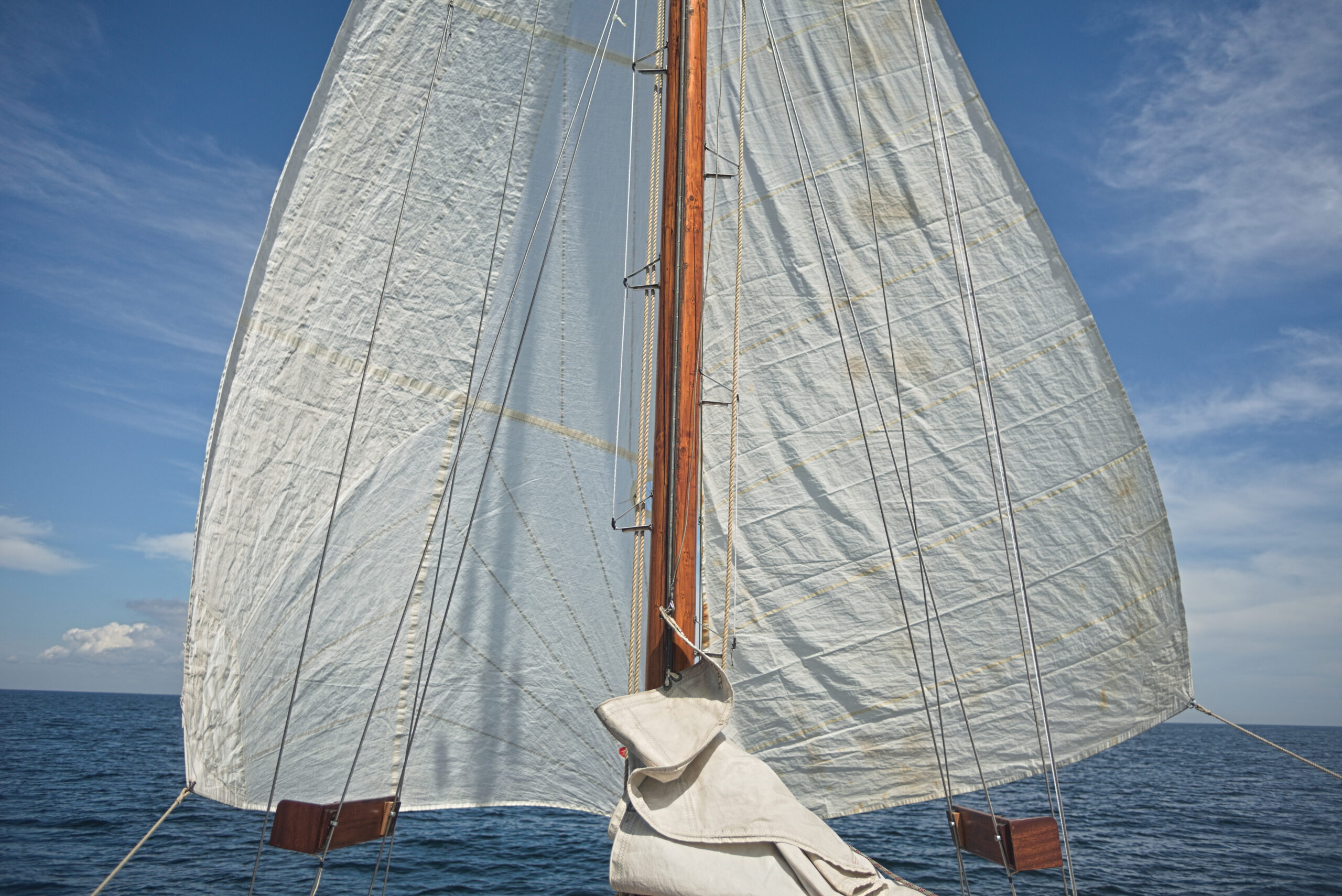We have arrived at the Faroe Islands, for now the most northern point of the voyage. How Sindbad safely sailed us to this beautiful location and what we experienced on the way, can be found in the following posts. For now we start from the very beginning, the shipyard 2024 and the last preparations during spring and summer of this year.
Marie is a very important support and companion, even during the shipyard phase. In addition to her manual skills, she also helped me with her eloquence so that this short joint report could be produced. Thank you very much!
Marie:
It was a warm summer’s day in June when I was parked in my car at shed 6 in Lübeck and tried to reach Leo on the phone. We didn’t know each other, but I was supposed to transport stuff – parcels and the like – from Lübeck to Rodby. No problem. When he finally answered, the soft voice, which kept breaking off, told me where in the harbour I could get the key. No sooner said than done. With several hands full of boat stuff, I travelled on to Puttgarden, where Leo met me on the ferry. Knowing that neither of us actually had any money, I bought us far too expensive ferry tickets. Once on the ferry, I tried to find out who the person was that I was going sailing with for a few weeks. It took a while, but I soon realised that he had trained as a nautical officer’s assistant, that Sindbad’s engine wasn’t running at the moment and that I already knew his old home, the Krista Rud, from a YouTube video. I quickly realised that Leo is crazy about the sea and sailing. How nice, another one like that!
When we arrived very late in the evening, Jakob – another potential co-sailor – was already waiting for us with the Indian cargo bike to pick us up. ‘Dinner would be ready.’ – The first of many times I heard this lovely sentence the following weekend. We ate the lentil stew and talked for a long time.
Unfortunately, Leo meant business the next morning when he announced the night before that he would be getting up at half past six. What the hell? A few minutes later, I got up from my more or less cosy bed on the floor of the container we were sleeping in. The list of things to do was long – a book long, to be precise. While Jakob slept for a while until I woke him up by hammering on Sinbad’s hull, Leo took care of the newly built masts and I repaired the rubbing strake. After breakfast, Jakob was given the honourable task of sanding the masts and spars by hand – a task that visibly brought him pure fulfilment. At very short and regular intervals, I was interrupted in my work by a hungry Leo. The project seemed to drain him of all his energy reserves and so I ate more that weekend than I usually do.
Leo:
In addition to the masts and spars, there were many other things on the long list. The bow section was extensively overhauled. In addition to a new seaworthy brace to support the jib boom, a new stainless steel fresh water tank was built. The new chain locker was built. Various wood and GRP repairs were carried out, both above and below deck, and of course they all needed to be sanded and painted. When the end was almost in sight, the old Perkins engine still wasn’t making a sound. A new one was needed. Finally, the blue Nanni engine arrived at the shipyard shiny and fresh. I was called straight in, everyone knew how much I was waiting for this engine. In joyful euphoria, I marvelled at the fresh parts and internalised the exact structure of the engine. In addition to the exploded drawings, I visualised all the maintenance work in my head. The engine has a great layout, so the necessary attachments will be easily accessible on Sindbad. I was so excited to put this power station into operation.

But unfortunately it wasn’t that easy. As part of the engine replacement, a new gearbox and shaft also had to be installed, and the exhaust and seawater system overhauled. The complete renewal of the rig and the addition of a superwind generator and a radar entailed some welding work. Everything had to be able to withstand all weathers and provide safe service in the long term. Fortunately, I had an experienced metalworker at my side who was very supportive with materials and marvellous welds. No matter how many jobs followed, wind generator bracket, radar bracket, stern fitting, compressor lines, life raft bracket, pulpit, luffing fittings, new mast ring fittings, engine foundation, exhaust manifold, and on and on, Jesper was always there with a steady hand and full of confidence. Like so many others, he made such an essential contribution to the success of this project. I am deeply grateful for that.

Marie:
A new propeller arrived shortly before the end. After craning and the first trip, the old propeller turned out to be too small for the new engine. With new hoses, a new water tank and a chain box with a meat grinder adapter, we were almost ready to go. However, the Lollander newspaper got wind of Leo’s plans and published several articles about the upcoming trip. There were also bills to be paid and friends and family to say goodbye to. At his farewell party in August, it slowly became clearer to everyone how close Leo’s departure was. However, it took a while to say goodbye because the new propeller could only be installed in Lübeck. Instead, Sindbad was able to undergo its first test run from Rodbyhavn to Lübeck. There was also enough time to design and print enough crew clothing. By now, people wearing Sindbad T-shirts could be seen far and wide. Nevertheless – the farewell came at some point and it wasn’t easy at all.

Leo:
What does it feel like to say goodbye? I wasn’t sure and hadn’t given much thought during the work phase to what it meant to leave my family, my closest friends and the places I knew so well behind me. I’ll be fine, I’m at home within my familiar walls. But finally – it made its way during the last spontaneous shipyard time in Herrenwyk – the pent-up emotions came out. It was time to say goodbye to my father. René accompanied me closely during the last intensive months and supported me in every phase of my work. Together, we have mastered seemingly endless projects and endured intense, stressful phases. Now I am staying on board the Sindbad alone and he is going his own way. How will I deal with this? From now on, I will be in contact by phone and probably only irregularly. That really took its toll on me and the realisation of saying goodbye to everyone close to me for several years was slowly coming.
First of all, I’m going to take one last break at the weekend and visit Marie. Then it gets serious. The last week is coming up. It starts with a small list of tasks and grows daily with new challenges. The days are full to bursting, I jet off in the car from the dealer to the workshop, to the boatyard and to my parents. The boat needs to be finally provisioned and stowed. An act that should take many more weeks. Packing a boat efficiently requires patience and calm. I also want to take some time to enjoy my home and being with my family.
Finally, reality is approaching: once the refrigeration technician has been on board, we’ll set off. The planned start is Wednesday evening, but it ends up being Thursday. But as long as we don’t leave on Friday, that’s all right. Because setting off on a Friday for a big trip is bad luck, so they say. So Thursday is the day, 1654 at the pier in Travemünde’s fishing harbour. The engine is warmed up and the lines are cast off. Five minutes later, we are calmly bobbing towards the Nordermole under full sail. Emil and Mika are on board with me, fantastic support, so we should probably cover a few miles. A small farewell committee is waiting at the Nordermole, the foghorn greets us one last time and Travemünde disappears gradually.

I’m on my way, off to travel the world, many years under sail, on my beloved Sindbad with very little space. It will take a few more quiet nights until I have fully arrived in this world.







